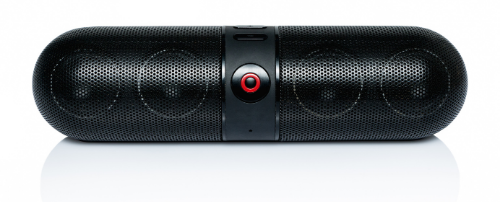Tag Archives for " telematic gateway "
Appareo Releases New Open Platform Telematics Device with Truly Global Connectivity
NEWS RELEASE
Appareo Releases New Open Platform Telematics Device with Truly Global Connectivity
The IP67-rated Gateway 370 features Iridium® SBD, 4G/3G/2G, and eSIM, certified for use in the USA, Canada, Europe, Brazil, and more.
FARGO, North Dakota (January 21, 2021) — Appareo today released a new product in the company’s award-winning line of telematic control units (TCUs). The Gateway 370 is a rugged yet lightweight edge computing platform for mobile equipment applications that provides a wide range of communication technologies. This release builds on the Gateway 270 model that was launched in 2020, adding an Iridium short burst data (SBD) satellite transceiver for truly global communication capabilities, and a 433 MHz receiver for use with sensors and active RFID tags.
Gateway 370 is built on an open and flexible platform that supports standard programming languages and tools, allowing Appareo customers to quickly and easily develop their own applications on the hardware. The device is built on a popular distribution of embedded Linux (Yocto) with Docker support, allowing a convenient development environment for C++, C#, or other common development languages.
“This flexibility and approachability gives Appareo customers the control they desire — allowing them to use a variety of approaches and resources to achieve the maintenance, service, and operational benefits customized to their needs,” said David Batcheller, President & CBO of Appareo.
In addition to the satellite and 433 MHz radios, the Gateway 370 comes with the full set of features found in the Gateway 270 model, including global LTE CAT 4 cellular radio with 3G/2G fallback and eSIM; dual core processor for handling significant computational capabilities at the edge; Wi-Fi and Bluetooth interfaces for communication between mobile devices and the machine for control and/or monitoring purposes; 6x CAN bus interfaces; Ethernet; BroadR-Reach; RS-232; GPS; and more.
These capabilities are housed in an IP67-rated rugged enclosure for use outdoors and for mounting on construction and agricultural machinery. The device’s array of wired and wireless communication technologies make it well suited for a broad spectrum of equipment control, monitoring, and connectivity challenges.
Wide Area Network
The Gateway 370 is certified for deployment in a broad range of North American, South American, and European markets, making it ideal for equipment manufacturers with broad geographic distribution. Appareo worked with carrier partners Vodafone International and Tata Communications to maximize the geographic potential of the Gateway 370. However, cellular coverage is still limited in some geographies. Appareo’s inclusion of an Iridium transceiver in Gateway 370 ensures that Appareo customers stay connected with their machines and that critical machine data can be retrieved, wherever that equipment may be (land, air, or water).
Local Area Network
The LAN connections (Wi-Fi, Bluetooth, and 433 MHz) allow machines to communicate directly with each other and with the operators or passengers. For example, people near the machine can be connected, informed, or in control, using real-time data with zero latency and no network costs. Further, the Gateway 370 can communicate with active RFID products (e.g., asset trackers), tire pressure sensors, and other wireless machine sensors. This capability allows for machines to receive information from hydraulic and mechanical attachments, and despite the lack of electrical power on those attachments, use information from the active RFID tag to recognize the attachment, and automatically adjust machine control settings accordingly.
For applications where Iridium is not required and the application may be more cost sensitive, defeatured variants of the Gateway telematic control units are available with the same open platform principle. This family design approach allows Appareo customers to access and utilize a variety of TCUs, on the same open platform, with a variety of capabilities and price points to address specific needs.
Appareo Gateway Series
To contact Appareo, acquire a development kit, and begin working with Appareo Gateways, visit appareo.com/gateways.
# # #
About Appareo
Appareo is a recognized leader in the custom design, development and manufacture of innovative electronic and software solutions for aerospace and terrestrial applications. Through the creative application of cutting-edge technologies, Appareo creates complex end-to-end solutions that include both mobile and cloud-based components. The company is privately held, with headquarters in Fargo, N.D., and a design office in Paris, France. All products are built and supported in the USA.
Product Photos: appareo.com/media
https://www.appareo.com/2021/01/21/appareo-releases-new-open-platform-telematics-device-with-truly-global-connectivity/
Choosing the Bluetooth That’s Right For You
Since the introduction of Bluetooth Low Energy (BLE) in Bluetooth 4.0, there are now four technologies used under Bluetooth 4.0 and later revisions. Although the history of naming these technologies has led to much confusion, the generally accepted names are Bluetooth Classic and Bluetooth Low Energy. Bluetooth Classic represents the BR, EDR, and HS (AMP) technologies, while Bluetooth LE represents the LE technology.
Bluetooth Classic devices are typically used in applications requiring streaming of data, such as audio. The physical layer and protocol of BR/EDR make socket-like streaming of data easy to accomplish. Rates of these data streams may be around 2-3 Mbps. Bluetooth Low Energy brings about some great features beyond low energy operation, such as one-to-many and many-to-many communications, as well as connectionless services. BLE is often used for data transmission, location services, and device network applications. These interactions operate much more like a shared database of characteristics through the use of a Generic Attribute Profile (GATT). Most mobile devices such as phones, tablets, and computers support both Bluetooth Classic and Low Energy; however, many devices use one or the other.
Bluetooth Low Energy brings about some great features beyond low energy operation, such as one-to-many and many-to-many communications, as well as connectionless services. BLE is often used for data transmission, location services, and device network applications. These interactions operate much more like a shared database of characteristics through the use of a Generic Attribute Profile (GATT). Most mobile devices such as phones, tablets, and computers support both Bluetooth Classic and Low Energy; however, many devices use one or the other.
Due to the differences in the physical layer modulation and demodulation, BLE cannot talk with Bluetooth Classic and vice versa. Similarly a BLE device cannot use Bluetooth Classic network and transport protocols when talking to a dual mode Bluetooth device. This is critically important for machinery manufacturers because although Bluetooth devices can typically communicate over a local area network to tablets and phones reliably, if you are going to use Bluetooth to communicate between machines and attachments, or between machine ECUs, you’ll need to select a protocol for the network of devices you’re managing.

- BLE can manage the data rates necessary to transfer typica data loads from mobile equipment busses (e.g. CAN buses running J1939)
- Bluetooth Classic can handle a lot more data
- Bluetooth Classic supports mobile devices tethering to telematic gateways or control units onboard machines and letting one device use the other’s data plan
- Bluetooth Classic is much more energy intensive than BLE, so if you have a battery-powered application BLE is the way to go
In summary, if you have a network demand for a fairly large amount of data, and you have access to vehicle power (or battery life management is not a concern), Bluetooth Classic is a good way to go. If you’re a battery-powered application or do not require transfer of significant volumes of data, BLE provides attractive networking flexibility, low power, and a low price.
 Michael Hoffman – Sales Manager, Land Mobile
Michael Hoffman – Sales Manager, Land Mobile
https://www.appareo.com/2020/11/02/choosing-the-bluetooth-thats-right-for-you/
